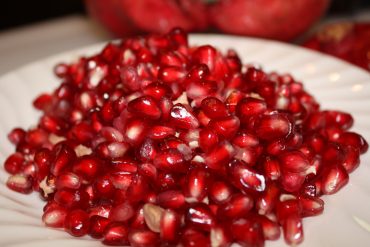Athlete’s foot (Tinea Pedis) is a common problem that many people will deal with at some point in their life. It is common for athlete’s foot to develop in the gaps between the toes, especially between the little toe and the adjacent toe. It can also develop on the top of the foot, the bottom of the foot and under the toenails.
Athlete’s foot is caused by a fungus, which can cause the skin to become hot, itchy and red. It can also cause blisters, or the toes to become swollen and the skin tight. The skin can turn white and thicken. The fungus can easily spread with warmth and moisture. Since people wear socks and shoes most of the day, it’s a perfect environment for this fungus to thrive.
What increases the risk of fungal infections?
Allergies
Dermatitis
Diabetes
Genetic predisposition
High sugar intake
Public showers
Running
Sweaty feet
Weakened immune system
Prevention
Try to keep your feet dry.
Dry feet exceptionally well after showering and swimming.
Don’t wear the same shoes two days in a row. (It can take shoes more than 24 hours to completely dry out).
Go barefoot when possible to allow the skin to dry and breathe.
Don’t share towels or socks.
Wash bedding, towels and socks at high temperatures to kill fungus.
Wash your hands. If you scratch the affected area and touch another area, you can spread the fungus.
12 Home remedies
- Baking soda- Add 1 tablespoon baking soda to a bowl with enough water to make a thick paste. Apply to affected area liberally, rinse and dry thoroughly. This is soothing to the affected area and relieves itching.
- Yogurt-Use plain live yogurt with acidophilus. Dab the yogurt on the affected area, allow to dry and rinse off. This is soothing and will help to keep the fungus in check.
- Organic Ginger-This herb is a strong anti-fungal. Chop an ounce of fresh organic ginger and add to a cup of boiling water, let simmer for 15-20 minutes, strain and allow to cool. Apply to affected area 1-2 times a day.
- Salt-Add 2 teaspoons of salt to two cups of warm water. Soak the foot for five to ten minutes. Rinse and dry thoroughly. Apply this method as often as needed for relief.
- Mustard-Add a small amount of mustard powder to a footbath to kill the fungus. You can soak your feet for 20 minutes.
- Calendula-This herb has antifungal and anti-inflammatory properties. Consider adding this herb to your foot soak, or use an essential oil highly diluted with another plain carrier oil and apply to the affected area. Caution: Applying undiluted essential oil directly to skin can burn the skin.
- Lavender-This herb also has antifungal properties. Add three drops of lavender oil to a teaspoon of a carrier oil and apply to affected area. Caution: Applying undiluted essential oil directly to skin can burn the skin.
- Colloidal Silver- Spray on the affected area and allow to dry. A few applications will help relieve the itching
- Colloidal Silver Soak-Take a large bowl or container, pour an inch and half or so of colloidal silver into it. Then soak your feet for about 30 minutes.
- Neem Oil- This is another anti-fungal oil. Apply to the affected area with a cotton ball and allow to dry.
- Apple Cider Vinegar-Mix a half cup of ACV in warm water and soak the foot for 15-20 minutes. Rinse and wipe dry after soaking. You can also put the diluted ACV in a spray bottle and apply to the affected area as needed.
- Hydrogen Peroxide-This will kill fungus and bacteria. Mix a pint of 3% hydrogen peroxide with a gallon of warm water. Soak for 20-30 minutes, two times daily. Rinse and dry thoroughly. Caution: If you have cuts or cracks on the affected area this will burn and sting.
When to see your doctor
You should always go to a doctor, whenever you feel you need to.
You develop cracks between your toes.
Your feet or toes swell.
The fungus is spreading.
You get blisters with pus.
Home remedies aren’t working.
Over the counter remedies aren’t working.
Toenails are thick and yellow.
References
Reader’s Digest 1,801 Home Remedies. Published April 12th 2004 by Readers Digest.








